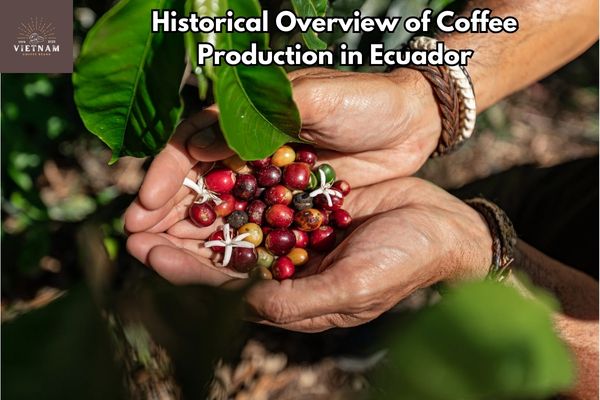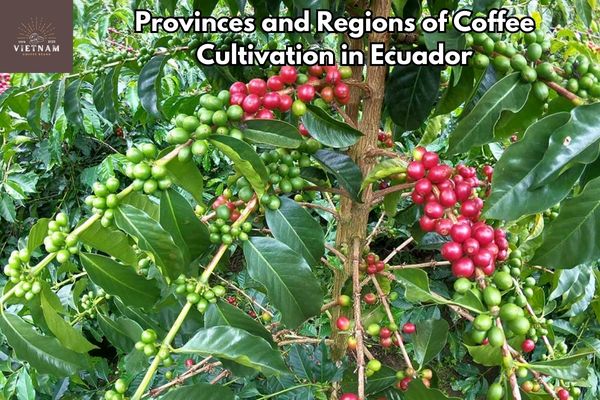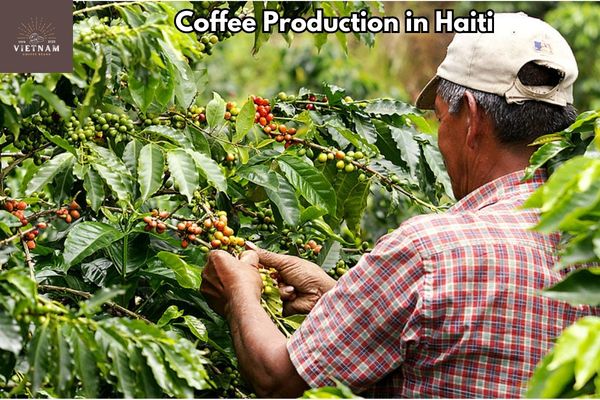I’ve had the privilege of witnessing the rich history and growth of coffee production in Ecuador. Since its introduction in 1860, the Jipijapa Zone in Manabí has been a prominent area for coffee cultivation.
Over the years, the industry has faced various challenges and experienced fluctuations in exports. However, it remains a vital part of Ecuador’s economy, with coffee being exported to numerous countries.
The collaboration between the private and public sectors has been crucial for the sector’s development. In this article, I will delve into the historical overview, growth, and future prospects of coffee production in Ecuador.
Key Takeaways
- Coffee cultivation in Ecuador has a long history, dating back to the introduction of coffee grains in 1860.
- The coffee industry in Ecuador plays an important role in the country’s economy.
- The main provinces for coffee cultivation in Ecuador are El Oro, Manabí, Loja, Guayas, and Zamora Chinchipe.
- Ecuadorian coffee is exported to 29 countries worldwide, with major export destinations including Russia, Poland, Germany, Colombia, Italy, and the Netherlands.
Historical Overview of Coffee Production in Ecuador

I learned that coffee production in Ecuador began in the 1860s and experienced significant changes with the opening of foreign trade. The timeline of coffee production in Ecuador is quite interesting.
In the early years, small plantations were developed for coffee export, parallel to cocoa production. However, the real growth came with the opening of foreign trade, which led to increased exports to European countries. The impact on local communities was immense, as coffee cultivation became an important source of income and employment.
Over the years, coffee production in Ecuador has seen its ups and downs, with fluctuations in exports due to economic recessions. Nonetheless, the coffee industry continues to play a crucial role in the economy, with different provinces specializing in different coffee varieties. It is fascinating to see how coffee production has evolved over time and its lasting impact on the local communities.
Similarly, Sri Lanka’s coffee cultivation process has also evolved over time, with the country now producing some of the finest coffee in the world. The coffee industry in Sri Lanka is a major source of income for many rural communities, and it has helped to preserve the country’s unique culture and heritage.
Growth and Trends in Coffee Production
The annual export of coffee bags in 2012 was estimated to be about 650,000.
Here are some key points to understand the growth and trends in coffee production in Ecuador:
Organic Coffee: Ecuador has embraced the production of organic coffee, which is grown without the use of synthetic fertilizers or pesticides. This ensures a healthier and more sustainable farming method that is environmentally friendly.
Sustainable Farming Methods: Coffee farmers in Ecuador have adopted sustainable farming practices to preserve the natural resources and biodiversity of the region. These methods include shade-grown coffee, which promotes the growth of other plants and provides habitat for wildlife.
Increased Production: Over the years, coffee production in Ecuador has seen a steady increase. This is due to advancements in farming techniques, improved infrastructure, and a growing demand for high-quality Ecuadorian coffee in international markets.
Economic Impact: The coffee industry plays a significant role in Ecuador’s economy, providing employment opportunities and contributing to the country’s export revenue. Collaboration between the private and public sectors is crucial for the continued growth and development of the coffee sector.
To understand the growth and trends in coffee production, it is essential to take an in-depth look at Colombian coffee production, as it serves as a benchmark for excellence and innovation in the industry, setting the stage for advancements and inspiring coffee producers worldwide.
Provinces and Regions of Coffee Cultivation

Manabí, El Oro, and Guayas are some of the provinces where coffee is cultivated in Ecuador. These regions have a long history of coffee production and have developed advanced farming techniques over the years.
Coffee farming in Ecuador is characterized by the use of shade-grown methods, which protect the coffee plants from direct sunlight and promote biodiversity in the surrounding areas. This technique helps to maintain soil fertility and prevent erosion.
However, climate change has started to impact coffee production in these provinces. Rising temperatures and unpredictable rainfall patterns have led to increased pest and disease pressure, as well as reduced yields.
Farmers are now facing the challenge of adapting their farming practices to mitigate the effects of climate change and ensure the sustainability of coffee production in Ecuador.
Coffee growing in Mexico has long been regarded as a benchmark of excellence, and its influence can be observed in the diverse provinces and regions of coffee cultivation in Ecuador, where a similar passion for producing exceptional coffee has led to the establishment of unique coffee-growing areas, each with its own distinctive flavors and characteristics.
Importance of the Coffee Sector for Ecuador’s Economy
Exporting Ecuadorian coffee to various countries around the world is crucial for our economy and relies on collaboration between public and private sectors. The coffee sector plays an important role in our local communities, providing employment opportunities and contributing to the livelihoods of many farmers.
However, the impact of climate change on coffee production is a growing concern. Rising temperatures, unpredictable rainfall patterns, and increased pests and diseases pose significant challenges for coffee growers. As an experienced coffee producer, I have witnessed the effects of climate change firsthand.
It is essential for the government and private organizations to invest in sustainable farming practices, research, and technology to mitigate these challenges. By addressing the impact of climate change, we can ensure the long-term viability of our coffee industry and continue to support our local communities.
The coffee sector plays a crucial role in Ecuador’s economy, and by studying the success of Kenya’s coffee growing regions, Ecuador can further harness the potential of its own coffee industry to drive economic growth and development.
Collaboration Between Private and Public Sectors
Collaborating with the private and public sectors is crucial for the development and sustainability of our local communities. As someone with experience in the coffee industry, I have witnessed firsthand the benefits that public-private partnerships and government support can bring to the table. Here are four reasons why collaboration between these sectors is so important:
Access to resources: By working together, the private and public sectors can pool their resources, including funding, expertise, and infrastructure, to support the growth of the coffee sector. This can lead to improved farming practices, increased productivity, and better access to markets.
Market development: Public-private partnerships can play a vital role in promoting Ecuadorian coffee internationally. Through joint marketing efforts, trade missions, and participation in international events, the government and private sector can work together to showcase the quality and uniqueness of our coffee to potential buyers around the world.
Capacity building: Collaboration between the private and public sectors can facilitate training programs and knowledge sharing initiatives. This can help coffee farmers and producers improve their skills, adopt sustainable practices, and overcome challenges such as climate change and pests.
Policy support: Government support is crucial in creating an enabling environment for the coffee sector. By implementing policies that incentivize investment, protect the rights of coffee farmers, and promote sustainability, the government can provide a stable and supportive framework for the industry to thrive.
Export Destinations for Ecuadorian Coffee

As a coffee industry professional, I have witnessed the global demand for Ecuadorian coffee firsthand. Ecuador’s coffee industry has been thriving, with exports reaching 29 countries worldwide.
Among the top importers of Ecuadorian coffee are Russia, Poland, Germany, Colombia, Italy, and the Netherlands. These countries recognize the exceptional quality of Ecuadorian coffee and appreciate its unique flavor profiles.
However, the impact of climate change on coffee production is a growing concern. Rising temperatures, unpredictable rainfall patterns, and the spread of diseases are posing challenges to coffee farmers in Ecuador and around the world.
As a result, the industry is actively working on implementing sustainable practices and developing resilient coffee varieties to mitigate the effects of climate change and ensure the long-term viability of coffee production in Ecuador.
Future Prospects and Challenges in Coffee Production
As we look to the future prospects and challenges in coffee production, it is essential to consider the impact of climate change and the role of technological advancements.
Climate change poses a significant threat to coffee cultivation. Rising temperatures, unpredictable rainfall patterns, and increased incidence of pests and diseases can negatively affect coffee yields and quality.
To mitigate these challenges, technological advancements play a crucial role. Improved irrigation systems, weather forecasting tools, and precision agriculture techniques can help coffee farmers adapt to changing climate conditions and optimize their production.
Furthermore, advancements in processing and storage technologies can enhance the shelf life and maintain the quality of coffee beans.
Embracing these technological innovations will be vital in ensuring the sustainability and resilience of the coffee industry in Ecuador and beyond.
Frequently Asked Questions
Conclusion
In conclusion, Ecuador has a rich history in coffee production. The Jipijapa Zone is a prominent area for cultivation. The industry has faced both challenges and successes over the years. Fluctuations in exports have occurred due to economic factors.
However, coffee cultivation remains an important sector in Ecuador’s economy. Collaboration between the private and public sectors is crucial for its development. Ecuador has a diverse range of coffee varieties and major export destinations.
The future prospects for coffee production in Ecuador are promising, although challenges may arise.





